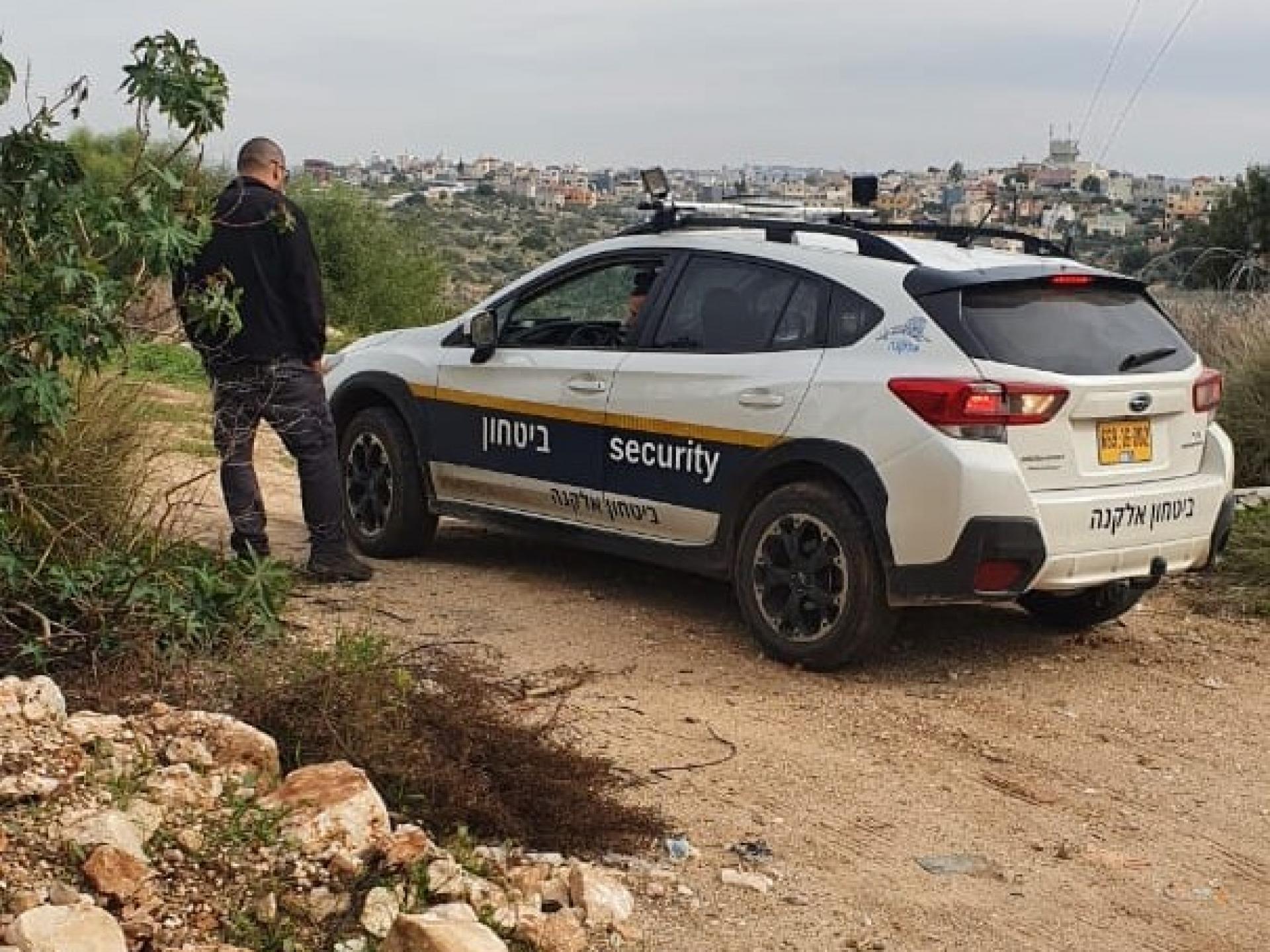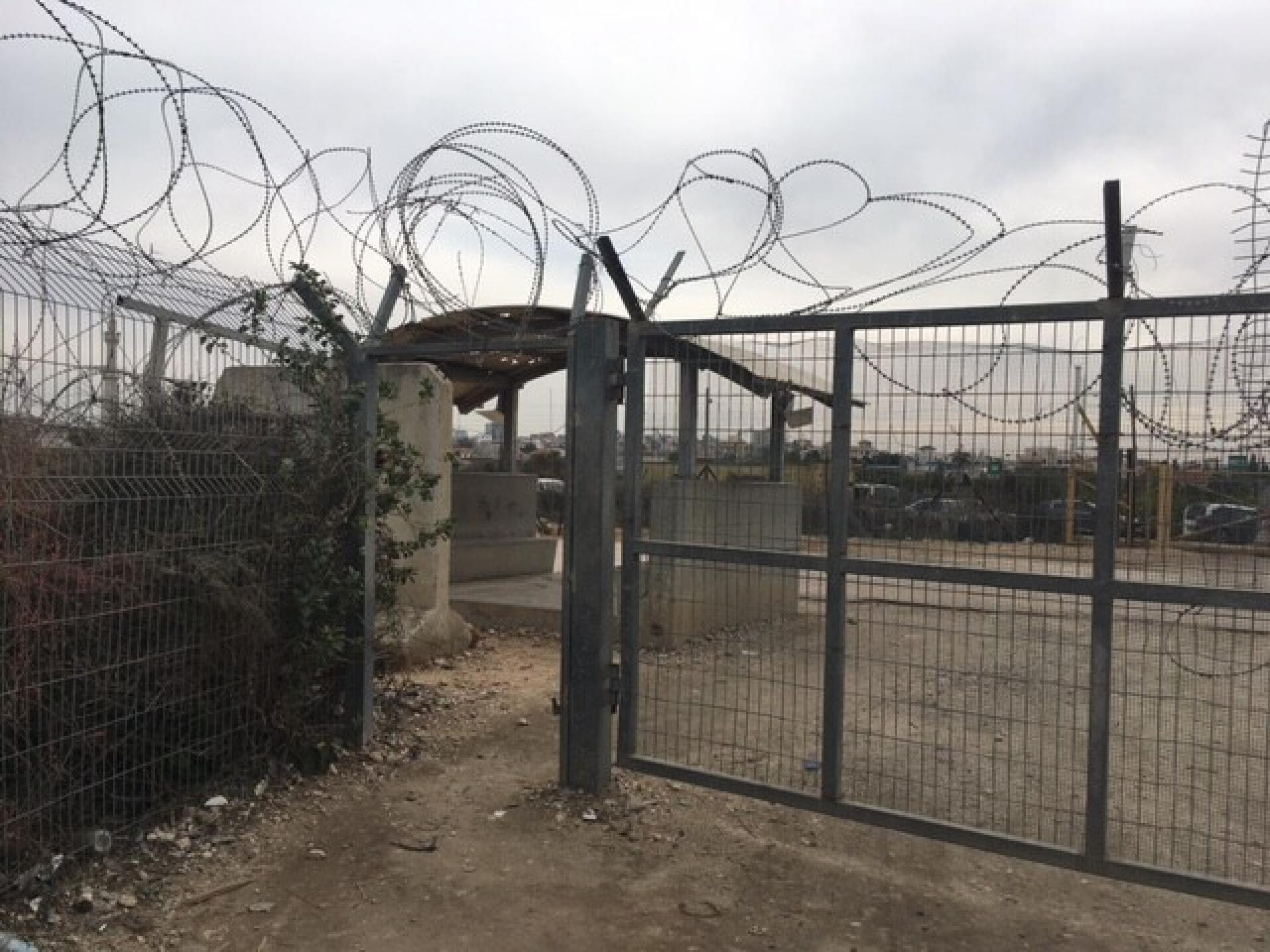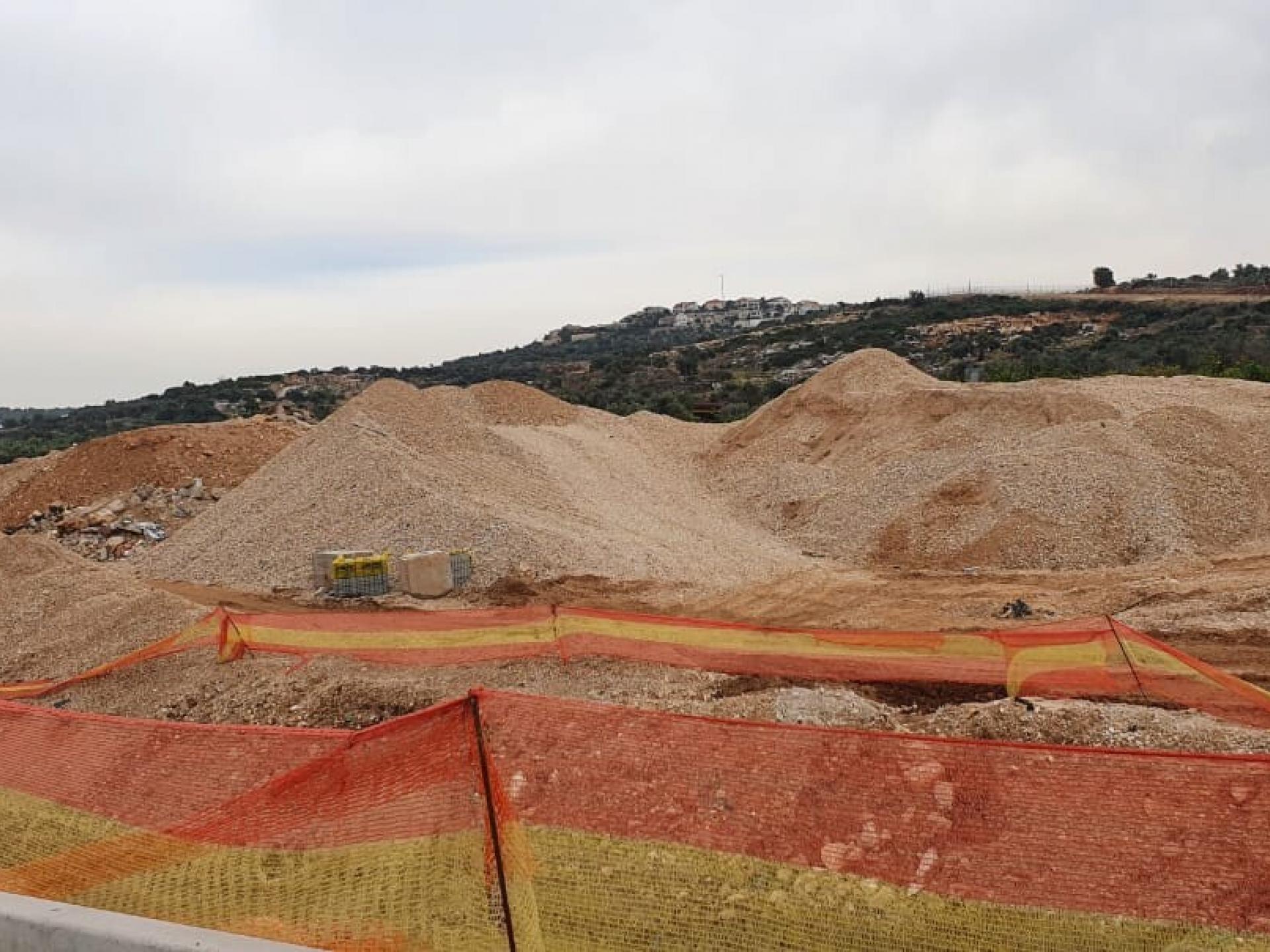Seam Zone - A tour of the area
A tour of the area, including explanations about the seam zone and how it came into being as a result of the creation of the separation barrier far from the Green Line in order to leave settlements on its western side.
11:15. We stopped at Hani Gate, the seasonal agricultural checkpoint, which no longer opens even during the olive harvest because the land of the olive groves that had been there is now completely buried beneath a mountain of construction rubble. After Hani explained how his home had been physically cut off from his village, Maskha, he showed with the aid of a map how the separation fence twice cuts the road connecting the adjacent villages of Siniriya and Maskha and forces residents going from one to the other to travel through the distant village of Bidya.
We began walking north along a path paralleling the fence to get a view of the Etz Efra’im settlement, which is expanding, when a security vehicle arrived and we were told to leave the area where our presence is forbidden. To our claim that nothing indicates such a prohibition he responded that there are security considerations that he doesn’t have to specify. Two more people emerged from the vehicle and a female security guard aggressively ordered us to leave and view Etz Efra’im from the road leading to it.
After driving to Etz Efra’im and marveling at the new neighborhoods being built in the valley on the slopes of the quarry we passed through the Oranit checkpoint, the plant nursery on the road to Kafr Qassem and reached the Habla checkpoint on Highway 444.
12:15 Habla checkpoint. While it’s not open at this hour nothing prevents someone from crossing on foot. The small metal gate whose lower portion had been open on our previous visit has been removed. We met a man who lives in Qalqilya but has an Israeli ID and passport. He told us his grandmother is Israeli, just like we have European ancestors that enable us to obtain a foreign passport. He said sometimes the soldiers also leave the vehicle gate open in the morning for a few hours to make the crossing easier.
We continued via Eliyahu checkpoint on Highway 55, which is being widened very quickly, and then through ‘Azzun, Jayous and Kafr Jamal to the Falamiya North agricultural checkpoint (914). Twelve cars were parked on both sides of the road beside the pump house. The soldiers arrived as scheduled at 13:15. A huge truck managed to maneuver between the gates , which aren’t opposite each other and was followed by a tractor. There’s still a gap in the fence to the right of the crossing. The gate was locked at 13:30.
, which aren’t opposite each other and was followed by a tractor. There’s still a gap in the fence to the right of the crossing. The gate was locked at 13:30.
We continued to Jayous North (935), explaining about the relocation of the fence westward following a Supreme Court decision and the changes in farming and irrigation practices made possible by the relocation. On the way we encountered a number of trucks and tractors that had apparently already gone through the checkpoint. There were no people or vehicles there when we arrived and the soldiers locked the gates . They said a greater number of people cross in the morning and the evening.
. They said a greater number of people cross in the morning and the evening.



